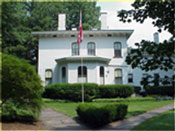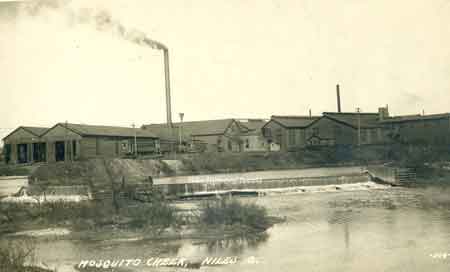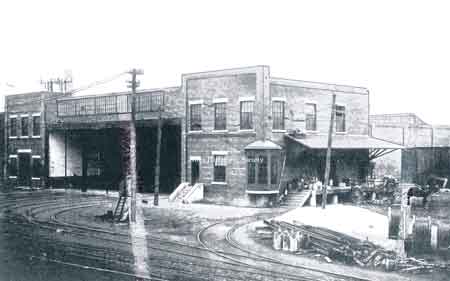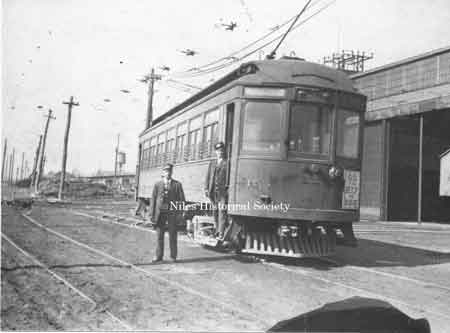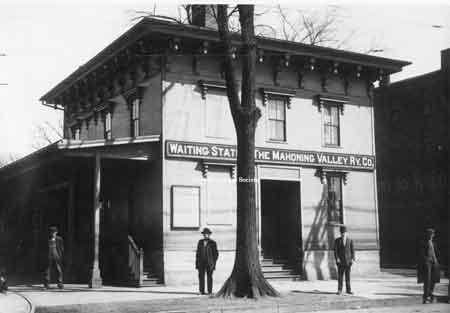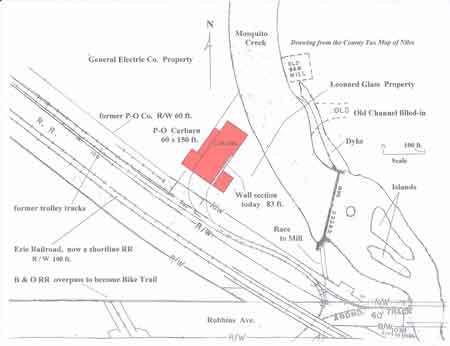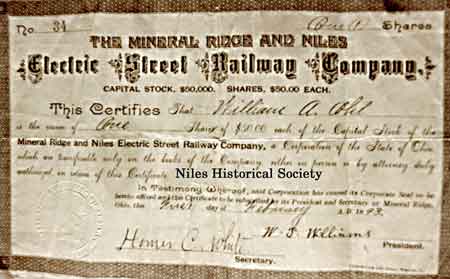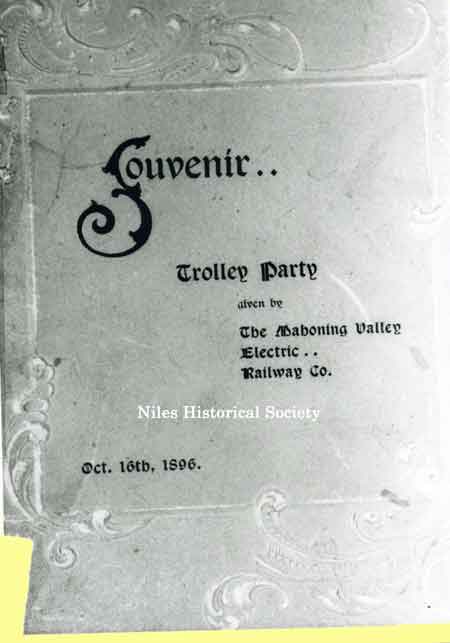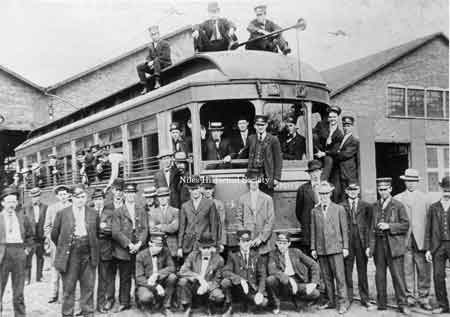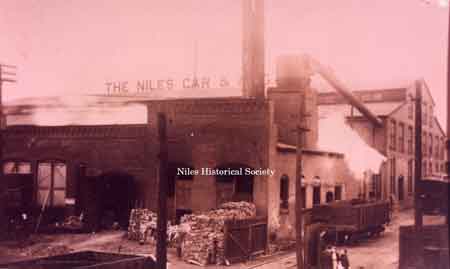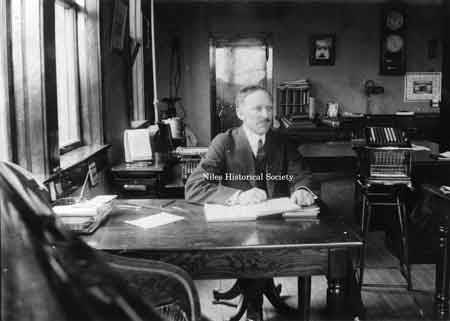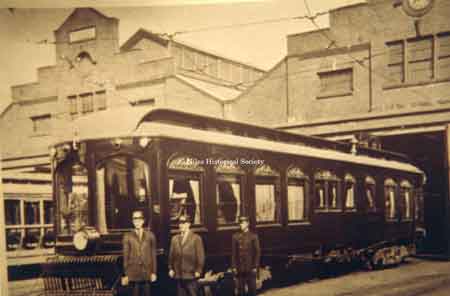Ward-Thomas Museum


Niles Car Barn
Ward — Thomas
Museum
Home of the Niles Historical Society
503 Brown Street Niles, Ohio 44446
Click here to become a Niles Historical Society Member or to renew your membership
Click on any photograph to view a larger image, click on image again to zoom into photograph.
| The
Niles Penn-Ohio System Car Barn –Bob Smith. To complete the trolley traction lines in southern Trumbull County, the Mahoning Valley Electric Railway began operation in 1895 with track age from Niles through Girard connecting with the Youngstown trolley system. Electric trolley transportation had begun in 1888 in Richmond, Virginia with a successful installation designed by Frank Sprague (1857–1934). |
||
| Although Warren was a larger city than Niles, Niles became the center of trolley operations with the erection of a large car barn along Mosquito Creek just north of Robbins Avenue. The aforementioned trolley (known as ‘traction companies’) were merged during the 1902-1906 period, becoming the Mahoning & Shenango Railway & Light Company, which then became the Penn-Ohio Electric Company, and finally in 1930 became the Ohio Edison Company. These trolley operations were actually interurban companies because they ran between cities and not just with routes within cities. |
||
|
Larger car barn with brick construction.
|
In 1911, the Mahoning & Shenango Railway & Light Company built a new larger car barn of brick and masonry materials (size approximately 150 X 65 feet) with a substation and freight house/offices adjoining the car barn. The car barn had six tracks to store approximately 20 trolleys/interurban cars. The Penn–Ohio System Niles car barn, built in 1911 to replace an earlier wooden car barn which was shown on the 1899 Atlas of Trumbull County. The 1911 car barn was located between the Erie Railroad tracks and Mosquito Creek and was demolished ca 1934. In 1985, Warren Trolley historian, Herb McBride, and NHS member, Bob Smith, inspected the car barn site discovering that the discarded concrete freight house steps were still on the rear of the Leonard Glass property. |
|
|
View in the front of the Penn–Ohio car barn, ca1920s. |
Car 155 built by the ‘home-grown’ Niles Car & Manufacturing Company in 1908, one of the six–car order that year. The car sat 54 riders, with an overall length of 51 feet. The roll sign says ‘Warren Express’. The front sign reads Warren Hippodrome as destination. This interurban trolley was scrapped in 1926. |
Waiting Station for the Mahoning Valley Railway Company. PO1. 1564 |
This map is based on the standard County Tax Map. Note the car barn and trolley trackage. Other historic map features are: the mill raceway and former sawmill and Mosquito Creek dam which existed on the 1874 Atlas of Trumbull County. Note the remaining wall section at the rear of the Leonard Glass Company. |
William Ohl Electric Steel Railway Company Mineral Ridge and Niles stock certificate #34. One share for $50.00 bought February 1, 1893. W.J. William, President. |
|
| |
||
The Penn–Ohio system ended all Niles-centered trolley operations on December 31, 1931, with nostalgic newspaper stories covering the ‘last runs’. The large car barn was demolished, after being offered to the City of Niles which declined the offer. It is unknown exactly when the demolition took place, but a May 1938 aerial map shows the structure gone. Today there remains an 83foot section–edge of the south foundation wall at the end of the Leonard Glass property. Some of the former trolley company’s property was purchased by the General Electric Company. R: Cover of souvenir program for a ‘Trolley Party’ given by the Mahoning Valley Electric Railway, October 16th, 1896. PO1.2358 |
||
|
|
||
|
At the car barns, the ‘Limited’ cars
were |
||
|
PO2.8 |
The interurban car, ‘The Northern’ at the Niles station streetcar barns. ‘The Northern’, the most noted car built by the Niles Car and MFG. Company, was built in 1901 for magnates Everett and Moore of the Northern Ohio Traction and Lighting Company. It was fifty-three feet long, eight feet six inches wide, twelve feet high, and weighed 54,900 pounds. |
|
